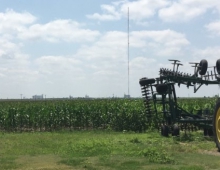
Internet Moves to the Next Generation of Internet Addresses as Devices Grow
The autorities that adninistrate internet will officially announce the transition to the next generation of Internet addresses, which will cover the need for more numerical addresses (IPs) as the internet grows wordwide.
On Thursday, 3 February 2011, the Number Resource Organization (NRO), along with the Internet Corporation for Assigned Names and Numbers, the Internet Society (ISOC) and the Internet Architecture Board (IAB) will be holding a ceremony and press conference to make a significant announcement and to discuss the global transition to the next generation of Internet addresses.
As the Internet addresses using the original Internet protocol, called IPv4 (Internet Protocol version 4) are running out, the internet organizations will distribute the last batches of IP addresses on Thursday. These blocks of IP addresses, each with 16.8 million addresses, will be distributed to the regional registries.
This means that the next IPs have to be based on the new Internet Protocol version 6, or IPv6.
The current Internet address system, Internet Protocol version 4 allows for a theoretical maximum of 4.3 billion addresses in use.
However, very few web sites currently support the new IPv6 protocol. As Internet service providers run out of IPv4 addresses, they'll have to give subscribers IPv6 addresses. The challenge lies in connecting them to websites that have only IPv4 addresses. The transition requires technologies that will "translate" current IPv4 addresses to IPv6.
The internet authorities believe that there will be no problems during the transition. Experts expect a years-long transition to move fully to IPv6. During that time, Web site operators, Internet service providers, and others will have to gradually shift infrastructure from handling one protocol to handling both.
As the Internet addresses using the original Internet protocol, called IPv4 (Internet Protocol version 4) are running out, the internet organizations will distribute the last batches of IP addresses on Thursday. These blocks of IP addresses, each with 16.8 million addresses, will be distributed to the regional registries.
This means that the next IPs have to be based on the new Internet Protocol version 6, or IPv6.
The current Internet address system, Internet Protocol version 4 allows for a theoretical maximum of 4.3 billion addresses in use.
However, very few web sites currently support the new IPv6 protocol. As Internet service providers run out of IPv4 addresses, they'll have to give subscribers IPv6 addresses. The challenge lies in connecting them to websites that have only IPv4 addresses. The transition requires technologies that will "translate" current IPv4 addresses to IPv6.
The internet authorities believe that there will be no problems during the transition. Experts expect a years-long transition to move fully to IPv6. During that time, Web site operators, Internet service providers, and others will have to gradually shift infrastructure from handling one protocol to handling both.





















